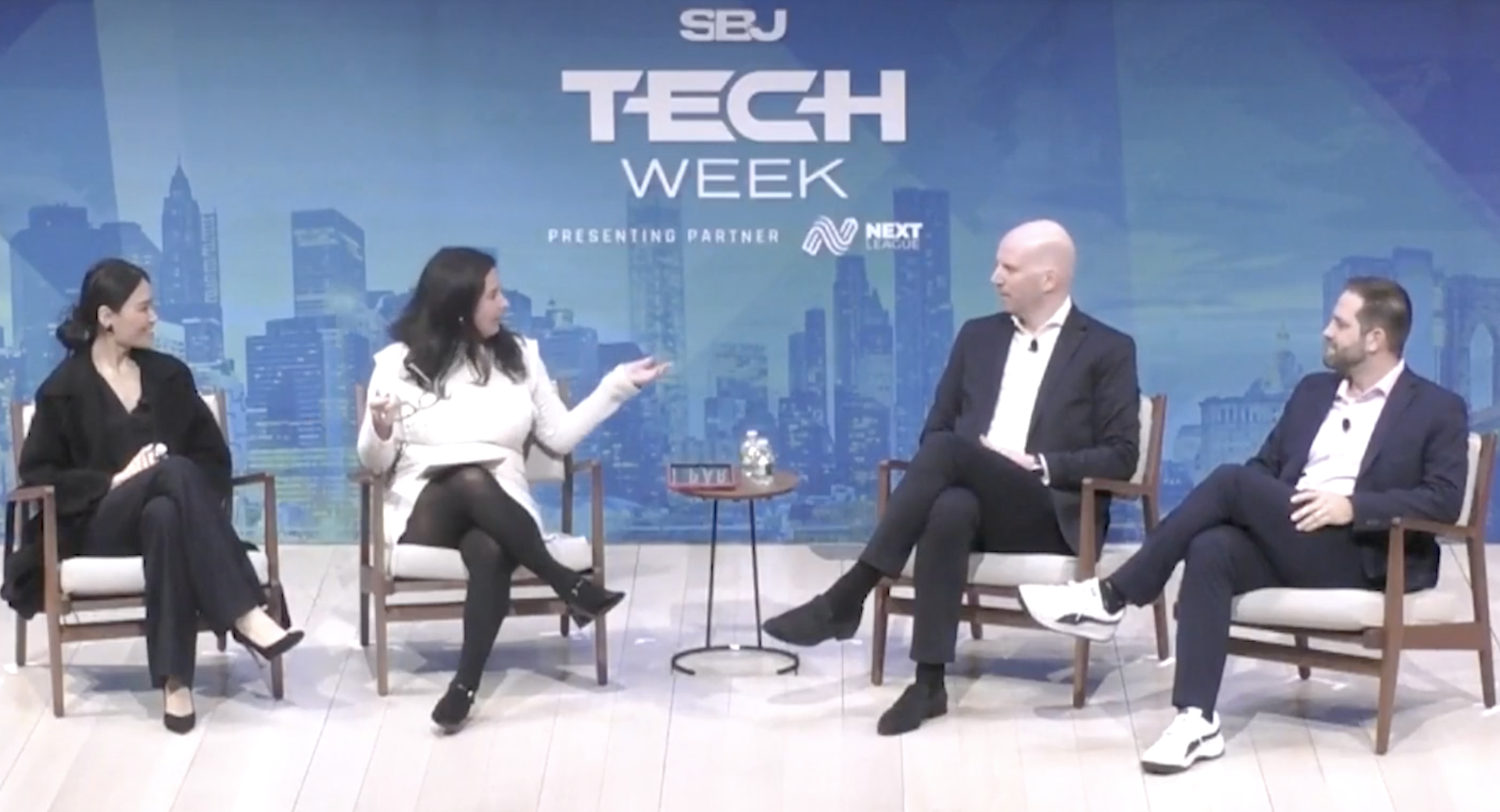Enhancing the Fan Experience: How Roblox, Beyond Sports, and Fabric Create a More Immersive Journey for Viewers
Approaches involve preferred platforms, melded social and interactive, mixed reality
Story Highlights
Sports marketers, industry founders, and digital technologists constantly seek ways to stimulate sports fandom in interactive environments, reach Gen Z and Gen Alpha fans on their preferred platforms, and deploy emerging technology to engage all fans throughout their fan journey.
Executives from Roblox, Beyond Sports, and Fabric, participating in a panel on fan-experience technology at this month’s SBJ Tech Week conference, focus on different approaches to fan engagement.

From Left: Tian Pei, head of sports partnerships, Roblox; Jenn Azara, managing Editor, SBJ Tech, Sports Business Journal; Sander Schouten, co-founder/CEO, Beyond Sports; and Saul Garlick, co-founder/CEO, Fabric; at SBJ Tech Week in NYC
One of the key issues the industry confronts is keeping fans engaged during the offseason. “I strongly believe that we need to have year-round hero characters that are not directly attached to real persons,” said Sander Schouten, co-founder/CEO, Beyond Sports, an AI-based data-analysis and -visualization company. “It’s no longer just about the game but about the whole environment. … It’s time to commit to the next generation but on their terms.”
It’s important for the sports industry, he argued, to “revive the characters” and real-life heroes of the past and educate young fans on the history of a particular sport and its famous players and why they matter today.
Popular social and gaming platform Roblox aims to play a “supporting role” as fans hang out and cheer on their favorite teams. “As long as we can do that,” said Tian Pei, head of sports partnerships, Roblox, “then it almost seems like the community solves it for themselves. They keep going back in the same way people keep going back to TikTok, to Instagram, to YouTube. That is our philosophy.”
Roblox enhances the fan journey by bringing social and interactive elements together, Pei noted: “As a brand, regardless of whether your objectives are to reach new fans, to market yourselves, to extend your IP, or just to have another resource in your fan toolkit, we’re able to transform that relationship between your fans and your brand.”
There’s a lot of tech-industry money that the sports industry can tap for the in-venue experience. “U.S. professional sports leaves at least $1.2 billion in digital revenue on the table every year,” noted Saul Garlick, co-founder/CEO, Fabric, a gamified mixed-reality platform. Sports marketers, he suggested, can use mixed-reality technology and gamified experiences to “unlock value at every touchpoint” and “meet the fan at every moment of their fan journey and not just engage them but monetize.” With incentives — earning badges, digital rewards, discounts on merchandise sales via trivia voting and polls or scanning a QR code at a sponsorship booth — teams can leverage mixed reality for multiple business reasons through lead generation, brand awareness, and fan engagement, he said.
To continue to innovate in the future, Beyond Sports, Roblox, and Fabric focus on different aspects.
Said Beyond Sports’ Schouten, “We need to keep finding ways to engage with these kids in their language.”
Roblox’s Pei added, “[We’re] trying to be innovative on our own and to tap into the power of 72 million [daily active users] and have them innovate and use our tools in ways that we probably can’t even think of.”
Fabric’s Garlick, noting that industry stakeholders are beginning to understand what mixed reality is, stressed the importance of the context and framework in which sports leagues and teams operate. “One of the things we’re constantly trying to do with innovation is to challenge the status quo and ask, ‘Are we considering different perspectives?’ I think, if the crowd is creating, you’re automatically getting that. And the more you’re enabling that, the more you’re getting cool, creative outcomes.
“The other side of the coin when it comes to innovation,” he continued, “is the framework you’re setting. We’re going to have to think about the next framework to support the right user experience. There are two outcomes: there’s innovation, and there’s bad ideas. If the market doesn’t want it, it’s just a bad idea. We have to be careful not to try stupid things.”
